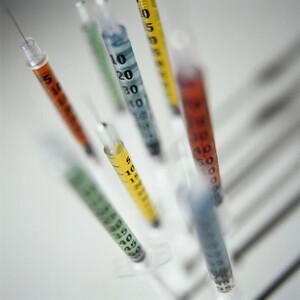FDA has outlined some of the requirements it intends to include in its biosimilars approval process in an article published in the New England Journal of Medicine [1]. The article is intended to give drugmakers, investors and other interested parties more insight into the approval process for biosimilars.
The authors, Dr Steven Kozlowski (Director, Office of Biotechnology Products); Dr Janet Woodcock (Director, Center for Drug Evaluation and Research [CDER]); Dr Karen Midthun (Director, Center for Biologics Evaluation and Research [CBER]); and Dr Rachel Behrman Sherman (Associate Director for Medical Policy) outlined some of the key requirements that may be included in any forthcoming guidelines.
FDA believes that complex regulations are required, since, unlike conventional chemical-based drug compounds, biotech drugs are derived from living organisms, such as proteins, and often produced using recombinant DNA technologies.
Due to their complexity, small differences in molecular structure that cannot be detected by current methods may have an adverse impact on clinical efficacy and safety. This underpins FDA’s belief that additional animal and human studies will be required.
FDA explains that there will be no ‘one size fits all’ systematic assessment for biosimilars. Instead developers will need to provide a ‘totality of evidence’, integrating various types of evidence ‘since it seems possible to exceed a current state-of-the-art analytic characterisation by evaluating more attributes and combinations of attributes at greater sensitivities with multiple complementary methods.’
It is possible that new technologies that can provide a ‘fingerprint’ of protein structures can be used to compare biosimilars to the originator biotech medicine more easily. However, while this ‘fingerprint’ technology is in its early stages, extra animal and clinical trials will still be required ‘for the foreseeable future’. Animal and human studies could be reduced in scope, but will have to be ‘carefully tailored to address residual uncertainty’.
The issue of immunogeneicity is a critical factor for FDA, which it intends to evaluate in a risk–based manner taking into account, for example, aggregation of proteins and nonredundant self-proteins.
Since even small differences may affect safety, tracking of adverse events associated with the use of both reference and biosimilar products, and the ability to readily identify the manufacturer, is an issue that FDA believes must be addressed.
FDA is likely to follow a similar approach to initial EMA guidance on biosimilars, published in 2005, which suggested product-specific requirements for structural, animal, and clinical studies. FDA also likes EMA’s approach to monoclonal antibodies, with its emphasis on ‘populations, pharmacodynamic markers, and endpoints that are sensitive to the potential differences between products’, saying that this is in ‘increasing alignment with the totality-of-the-evidence approach favoured by the FDA.’
Although the agency frequently meets with sponsors before they submit investigational new drug applications, a more extensive product review will be required to determine how much additional data are needed for a biosimilar. FDA is currently considering how such interactions might be structured and how they will affect the user-fee programme that Congress has mandated for biosimilars.
Discussions about interchangeability, which would allow pharmacists to switch a branded biological for a biosimilar, are still ongoing, as well as what would happen if a product was deemed not interchangeable.
It has been well over a year since the Biologics Price Competition and Innovation (BPCI) Act of 2009 was signed into law on 23 March 2010 by President Barack Obama. However, FDA still has a long way to go before its biosimilar regulations are ready. The agency seems set on establishing a complex and demanding set of requirements for biosimilar developers. This could drive the costs to develop and register a biosimilar too high for some, whilst other biosimilar developers may turn instead to follow-on biologicals or biobetters. Altering an existing molecule to improve efficacy or safety, and opting for a standard Biologic License Application instead of the abbreviated pathway for biosimilars, would secure developers a lucrative 12-year exclusivity period. This, however, would mean that prices would remain high and patients and payers alike would lose out.
The agency has already set up the Biosimilar Implementation Committee and has put in place two review committees: the CDER Biosimilar Review Committee and the CBER Biosimilar Review Committee. It also held a two-day public meeting in October 2010 to gain input on the act’s implementation from interested parties including the public, healthcare professionals and manufacturers. FDA has stated that it ‘will take the information it obtains from the public hearing into account in its implementation of the BPCI Act’ [2].
A more formal FDA policy is expected before the end of 2011, clarifying how to define a biosimilar product, what standards should govern biosimilarity and interchangeability, how to name products and accompanying pharmacovigilance issues, and the types of exclusivity that apply to biosimilars.
Related articles
A biosimilar by any other name …
Biobetters rather than biosimilars
US biosimilars pathway unlikely to be used
References
1. Kozlowski S, Woodcock J, Midthun K, Sherman RB. Developing the Nation’s Biosimilars Program. N Engl J Med. 2011;365:385-8.
2. GaBI Online - Generics and Biosimilars Initiative. FDA holds public hearing on biosimilars pathway [www.gabionline.net]. Mol, Belgium: Pro Pharma Communications International; [cited 2011 August 12]. Available from: www.gabionline.net/Biosimilars/News/FDA-holds-public-hearing-on-biosimilars-pathway
Source: Reuters, Ropes & Gray








 0
0











Post your comment